Key takeaways:
- Selective mutism is a response to anxiety, not a choice, highlighting the need for awareness and understanding to foster support.
- Therapy outcomes extend beyond verbal communication, with clients often developing coping strategies and increased confidence in social settings.
- Personal therapy experiences emphasize the significance of small victories, self-compassion, and connecting with one’s inner voice for personal growth.
- Effective strategies include documenting progress, practicing mindfulness techniques, and sharing experiences with others to enhance understanding and support.
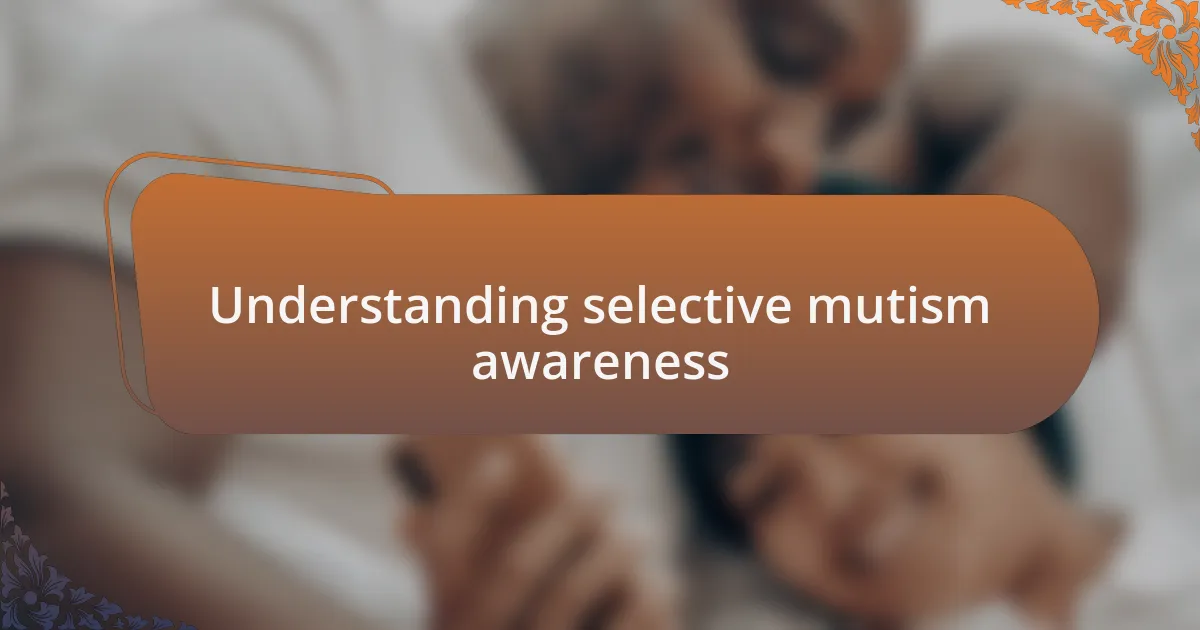
Understanding selective mutism awareness
Selective mutism is often misunderstood, yet it holds profound implications for those affected. I can recall a friend’s experience—she was bright, witty, yet the moment it was her turn to speak, silence enveloped her. How daunting it must have been to feel the weight of others’ expectations, not to mention the inner struggle of wanting to participate but being unable to voice it.
It’s essential to recognize that selective mutism isn’t a choice; it’s a response to anxiety. Reflecting on my own observations, I remember seeing children freeze in social settings, their eyes darting around as if searching for a way out. What they’re feeling is often a mix of fear and confusion. It prompts me to wonder, how can we create a world where every voice—no matter how small—feels safe to be heard?
Awareness is the first step toward empathy and support. I often think about how much easier it would be for someone who struggles with selective mutism if peers understood their experience. Isn’t it incredible how much change can stem from simply acknowledging what someone is going through? Small acts of understanding can transform interactions, fostering a sense of belonging for those who find speaking out to be an insurmountable challenge.
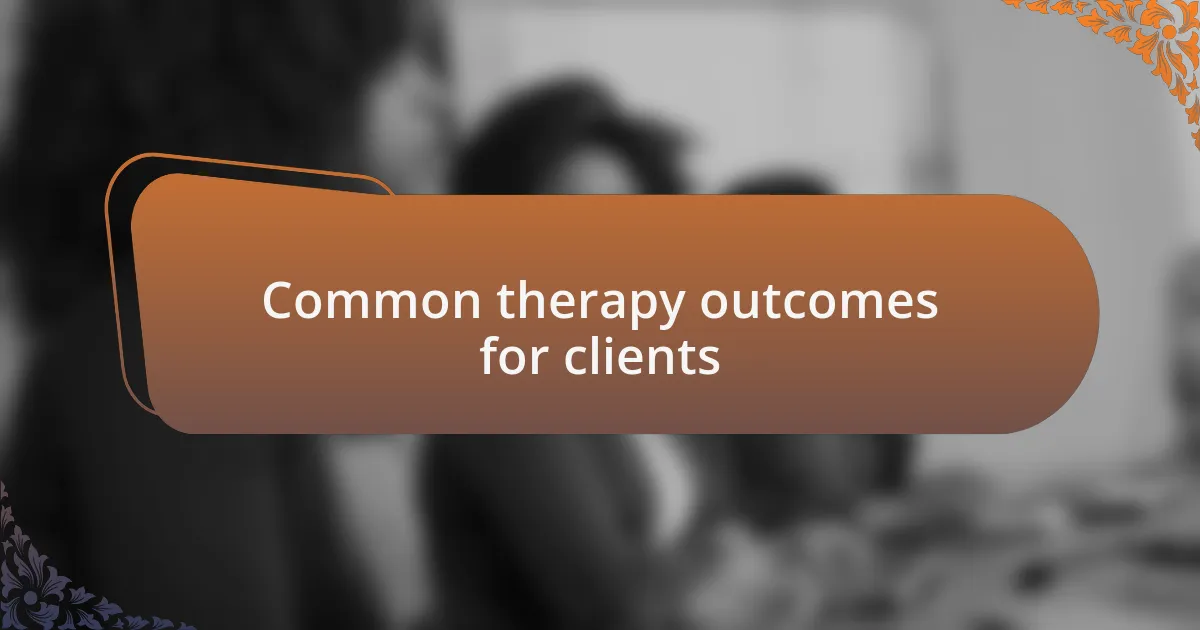
Common therapy outcomes for clients
Therapy outcomes for clients grappling with selective mutism often reveal a spectrum of progress that goes beyond mere verbal communication. I once worked with a child who, after a few sessions, started making eye contact and nodding in response to questions. This small yet powerful change demonstrated how therapy can open pathways to connection, showing that even the most basic interactions can feel monumental.
Many clients experience increased confidence in social settings as they work through their therapy goals. I vividly remember a young girl who, after months of support, bravely shared a few lines of a poem in front of her class. The joy and pride radiated from her face, reminding me that each victory, no matter how small, contributes to a larger journey toward self-expression.
Another common outcome I’ve observed is the development of coping strategies that empower clients to manage their anxiety. For instance, I encouraged one client to use breathing techniques whenever they felt overwhelmed in social situations. The sense of control this brought them not only reduced their anxiety but also allowed them to engage more freely with their peers. Isn’t it amazing how practical tools can shift a person’s experience from fear to empowerment?
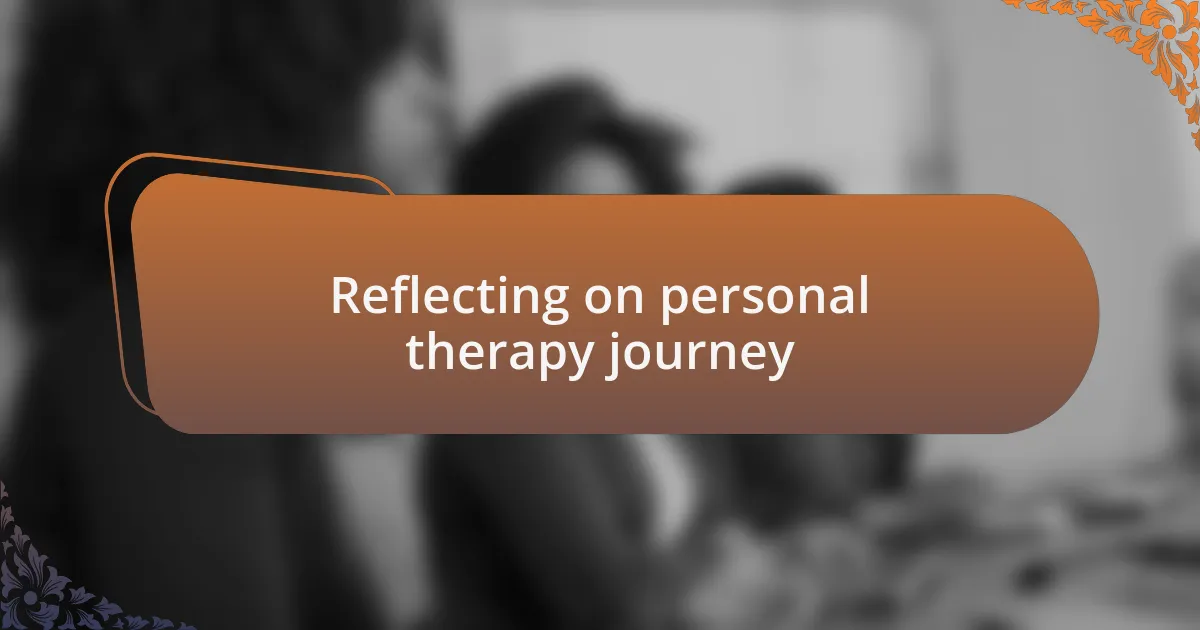
Reflecting on personal therapy journey
Reflecting on my personal therapy journey, I realize how transformative it can be to confront deeply rooted fears. When I first walked into therapy, I felt overwhelmed by my inability to communicate in social settings. Each session forced me to peel back layers of anxiety and uncover the reasons behind my silence, revealing not just fears but also insights about my strengths.
As I engaged in various therapeutic exercises, like role-playing conversations, I began to notice subtle shifts in myself. I fondly recall a moment when, during a practice session, I spoke a full sentence without my heart racing. That breakthrough was exhilarating, leaving me with a sense of possibility that I hadn’t felt in years. Isn’t it fascinating how moments of vulnerability can lead to profound personal growth?
The journey was not without its challenges, of course. There were days I left feeling defeated, wondering if anything would change. But in those reflections, I recognized that the process itself was just as important as the outcomes. Now, I see those ups and downs as essential steps in my journey, shaping my resilience and understanding of myself in ways I never anticipated.
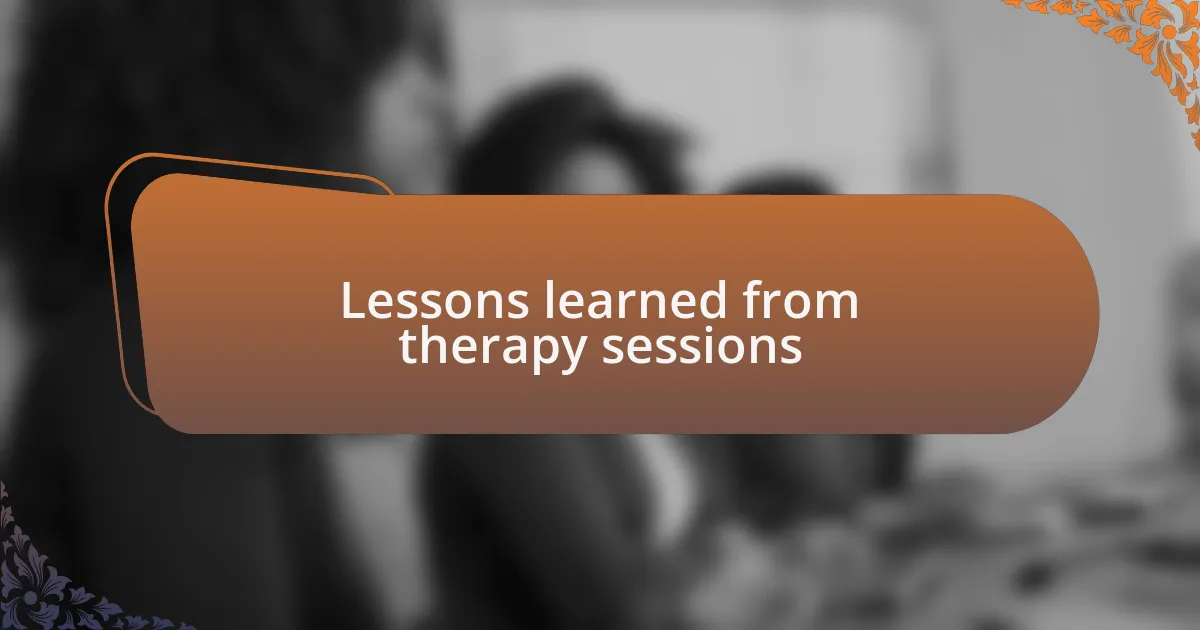
Lessons learned from therapy sessions
One significant lesson I learned during my therapy sessions was the importance of embracing small victories. I remember a day when I managed to greet a stranger at the coffee shop. It may seem trivial, but the thrill of that moment was huge for me. It made me realize that progress doesn’t always have to be monumental; even the tiniest steps count on this journey.
Another important insight was understanding the power of self-compassion. There were times I would leave a session feeling frustrated over my perceived setbacks. However, my therapist encouraged me to treat myself with the same kindness I would offer a friend facing a similar struggle. This shift in perspective helped me to acknowledge that it’s okay to take my time in overcoming obstacles; it’s about progress, not perfection.
Reflecting on these experiences, I also recognized a deeper connection to my inner voice. During one session, my therapist encouraged me to explore what I truly wanted to express, rather than focusing solely on my anxiety. This exploration uncovered thoughts I hadn’t allowed myself to voice before, highlighting that my silence was not just a barrier, but a longing for connection. Have you ever considered how much your own voice matters in your healing journey? That realization was a turning point for me.
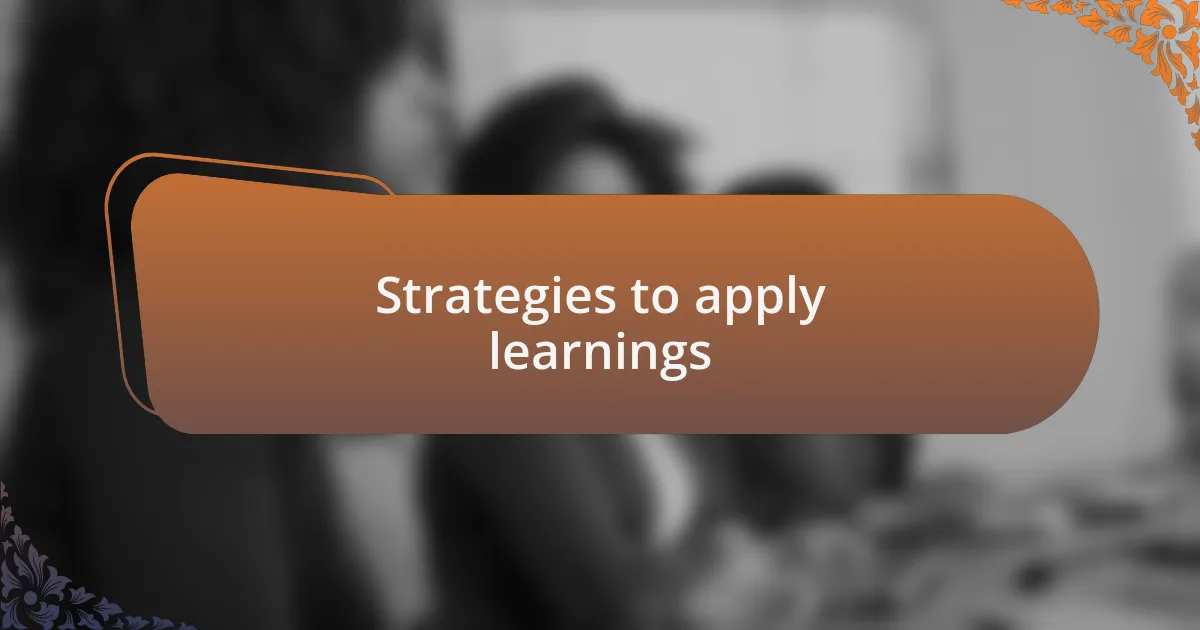
Strategies to apply learnings
One effective strategy I found was to create a visual reminder of my progress. After each therapy session, I started jotting down my thoughts in a journal, capturing those small victories and insights. I would revisit these entries regularly, and it was astounding to see how far I’d come. Have you ever tried documenting your journey? It’s like having a tangible map of your own growth.
Another approach that resonated deeply with me was practicing mindfulness techniques. I remembered a particularly challenging moment when I used deep breathing exercises before speaking in a group setting. That sense of calmness didn’t just help me communicate; it made me appreciate the moment, shifting my focus from anxiety to connection. What strategies have you found that help ground you? It’s incredible how something as simple as breathing can transform a situation.
I also discovered the value of sharing my experiences with someone who understands. One day, I met a friend who was familiar with selective mutism, and our conversation opened up new avenues of understanding. It was enlightening to witness how sharing stories can not only reinforce your learning but also foster a supportive community. Have you thought about reaching out to others who share similar experiences? Sometimes, connection is the key to growth.